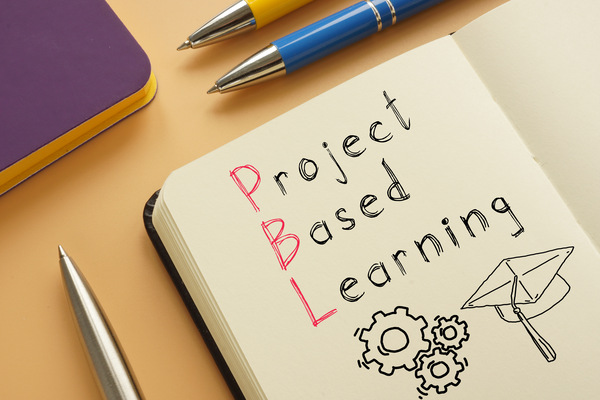Uncover the Truth: Does Investing in a Full Stack Developer Course Break the Bank?
The demand for skilled Full Stack Developers continues to soar. With lucrative career opportunities and the promise of innovation, many aspiring developers are eager to dive into a career specializing in this field of expertise. However, one burning question lingers: Does investing in a Full Stack Developer course come with a hefty price tag?
Let’s delve into the factors that influence the cost of Full Stack Developer courses and explore whether the investment is truly worth it.
Understanding the Landscape
Before we tackle the cost aspect, let’s establish a clear understanding of what Full Stack Development entails. Full Stack Developers are proficient in both front-end and back-end development, capable of building complete web applications from start to finish. This requires expertise in a wide range of technologies, including HTML, CSS, JavaScript, and various back-end languages and frameworks.
The Investment: Cost vs. Value
When considering enrolling in a Full Stack Developer course, it’s crucial to weigh the cost against the value it offers. While some courses may come with a significant price tag, they often provide comprehensive training, hands-on projects, mentorship, and career support. These elements can significantly enhance your learning experience and accelerate your journey toward becoming a proficient Full Stack Developer.
Breaking Down the Components
To assess whether the investment is worthwhile, let’s break down the components of a full stack developer course:
Curriculum
A well-designed course will cover a broad spectrum of programming languages, frameworks, and tools essential for full stack development. From front-end technologies like HTML, CSS, and JavaScript to back-end frameworks like Node.js and Django, the curriculum should provide a comprehensive understanding of both client and server-side development.
Hands-on Projects
Theory is essential, but practical experience is invaluable. Look for courses that offer hands-on projects and real-world scenarios to apply your newfound skills. Building projects not only reinforces learning but also equips you with a portfolio to showcase to potential employers.
Mentorship and Support
Learning to code can be challenging, especially for beginners. A supportive learning environment with experienced mentors can make all the difference. Seek out courses that offer mentorship and community support to guide you through the learning journey.
Certification
While not always necessary, a recognized certification can enhance your credibility in the eyes of employers. Look for courses that provide certification upon completion, preferably from reputable organizations or industry leaders.
Factors Influencing Cost
The cost of Full Stack Developer courses can vary widely depending on several factors:
Course Provider
Different institutions, whether universities, coding bootcamps, or online platforms, offer Full Stack Developer courses at varying price points. The reputation, accreditation, and resources of the provider can impact the cost.
Duration and Intensity
The length and intensity of the course also play a role in determining its cost. Shorter, more intensive programs may come with a higher price tag but offer a more accelerated learning experience.
Curriculum and Resources
Courses that provide comprehensive curriculum, access to industry-standard tools and resources, and opportunities for real-world projects tend to be more expensive but offer greater value in terms of skill development.
Mentorship and Support
Courses that include mentorship, personalized feedback, and career support services may come at a premium but provide invaluable guidance and assistance throughout your learning journey.
Exploring Different Options
When exploring Full Stack Developer courses, it’s essential to research and compare different options to find the best fit for your goals, budget, and learning style. Here are some common types of courses to consider:
University Programs
Many universities offer degree programs or certificate courses in Full Stack Development, ranging from undergraduate to postgraduate levels. While these programs may be more traditional and structured, they often come with a higher cost and longer time commitment.
Coding Bootcamps
Coding bootcamps have gained popularity for their immersive, intensive, and career-focused approach to education. These programs typically last a few months and offer hands-on training in Full Stack Development. While boot camps may be more affordable and time-efficient than university programs, they still require a significant investment.
Online Platforms
Online learning platforms such as Udemy, Coursera, and Codecademy offer a wide range of Full Stack Developer courses at varying price points. These courses are often self-paced and accessible from anywhere, making them a flexible and cost-effective option for many aspiring developers.
Free Resources
Don’t overlook the abundance of free resources available online for learning Full Stack Development. From tutorials and documentation to open-source projects and community forums, you can acquire valuable skills and knowledge without spending a dime. While self-learning may require more discipline and motivation, it can be a budget-friendly alternative for those on a tight budget.

Image by lookstudio on Freepik
Assessing Return on Investment (ROI)
Ultimately, the decision to invest in a full stack developer course boils down to assessing the potential return on investment (ROI). Consider the following factors when evaluating the ROI of a course:
Career Opportunities
Will the course equip you with the skills and credentials needed to pursue lucrative career opportunities in Full Stack Development? Research job market trends, salary prospects, and employer demand to gauge the potential ROI.
Skill Development
How much value will you gain from the course in terms of skill development and professional growth? Look for courses that offer practical, hands-on experience and align with your career goals.
Networking and Support
Does the course provide opportunities for networking, mentorship, and career support? Building connections within the industry and receiving guidance from experienced professionals can enhance your prospects for success.
Personal Fulfillment
Beyond financial gains, consider the intrinsic value of pursuing a career in Full Stack Development. Does the course align with your passions, interests, and long-term aspirations?
Conclusion
In conclusion, while investing in a Full Stack Developer course may require a significant financial commitment, the potential benefits and opportunities it offers can outweigh the cost. By carefully assessing the value, comparing different options, and considering the potential ROI, you can make an informed decision that aligns with your career goals and aspirations. Remember, the journey to becoming a proficient Full Stack Developer is not just about the price you pay for a course but the skills, knowledge, and experiences you gain along the way.








